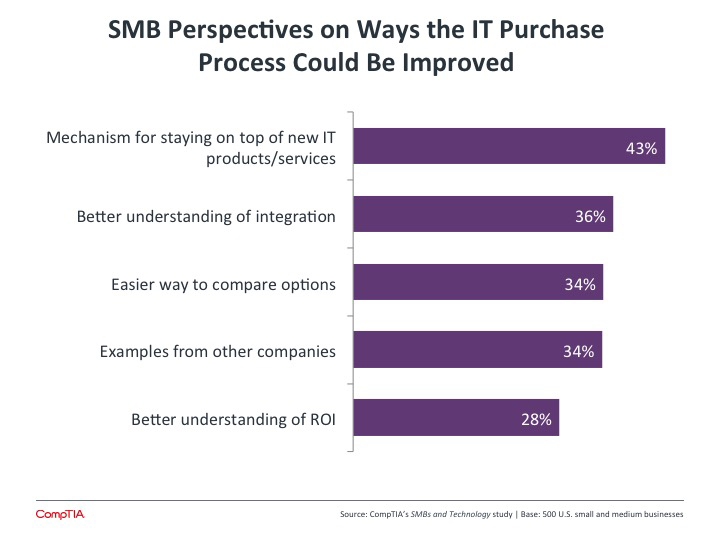SETH ROBINSON
CompTIA
Senior Director,
Technology Analysis
Individually, small and medium-sized businesses (SMBs) may not be able to create the same impact as larger juggernauts. Collectively, they have a huge impact on hiring and economic activity. SMBs represent 99.7 percent of the 6 million U.S. employer firms, according to the Office of Advocacy of the U.S. Small Business Administration, and have generated 63 percent of net new jobs over the past 15 years, and create 33 percent of export value.
In addition, these firms have very unique technology needs. Their resource constraints force them to be extremely efficient with dollars and time, so investments have to be scrutinized. On the other hand, many of these businesses have a high degree of agility, especially younger firms who have yet to sink their funds into infrastructure.
 Just like their larger counterparts, smaller businesses now look at technology as a strategic driver for business objectives. Cost reductions top the list of objectives for SMBs, with 58 percent citing that as a priority. This can certainly make for a challenge when investing in new technology, but it’s not hard to make the argument that the right business systems can help with other priorities on the list.
Just like their larger counterparts, smaller businesses now look at technology as a strategic driver for business objectives. Cost reductions top the list of objectives for SMBs, with 58 percent citing that as a priority. This can certainly make for a challenge when investing in new technology, but it’s not hard to make the argument that the right business systems can help with other priorities on the list.
Take the No. 2 priority as an example. A reported 55 percent of SMBs cite reaching new customers as a goal, and most of these customers are going to be expecting to do business in a digital or mobile environment. This is true for B2B and B2C. SMBs don’t always shine in web presence, so it’s an uphill battle to capture the attention of these new customers.
Help From the Outside
To achieve these goals, SMBs will be looking more often look for outside help to get the right level of expertise and to allow their staff members to focus more on their core competencies. The most common way that SMBs engage with outside firms right now is for repair or troubleshooting, but there is evidence that they are looking for more innovative solutions and companies flexible enough to provide those solutions.
The trick is finding the model that works based on the money an SMB is willing to pay and the revenue a channel firm needs to be viable. Solving that problem begins early in the process, as companies are working to evaluate options for purchase and determine return on investment. SMBs could name dozens of improvements they’d make in the purchase process, and bringing these ideas to the table is a good start for proving value as a partner.
Vendors and solution providers have been trying to crack the challenging SMB market for a long time. With the changes in technology, there are even more options available to smaller businesses and more opportunity to help them grow and compete on a larger scale.
Premier members have access to the full report, Enabling SMBs With Technology, on our Insight & Tools page. Still signing in as a registered user? Consider an upgrade.
Seth Robinson is CompTIA’s senior director of technology analysis.

